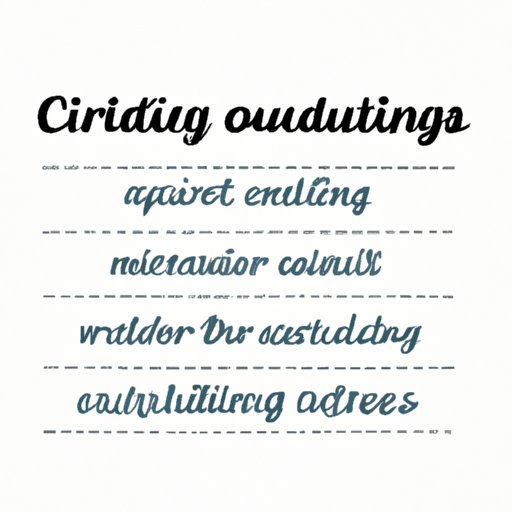
Introduction
Quoting and citing sources is an integral part of academic and professional writing. It is important to provide credit to the original author and to maintain the credibility and integrity of your own work. In this article, we will explore the different types of quotes, how to correctly cite sources, common mistakes to avoid, and how to effectively improve your writing with quotes.
Different types of quotes
There are two main types of quotes: direct quotes and indirect quotes. Direct quotes are exact words or phrases taken from the original source and are enclosed in quotation marks. Indirect quotes, also known as paraphrasing, involve restating the original text in your own words without using quotation marks. Both types of quotes have their place in writing depending on the goals of your work.
Direct Quotes
Direct quotes are used when it is important to cite the exact words of the original source. They can be used to add support to your arguments, provide evidence, or illustrate a point. When using direct quotes, it is important to follow these guidelines:
- Enclose the quoted text in quotation marks
- Punctuate the quote correctly, including commas and periods within the quotation marks
- Include the page number or paragraph number where the quote can be found in the original source
For example, if you were writing an essay about the effects of social media on mental health, and you found a relevant quote in a scholarly article, you would use a direct quote in the following way:
“Recent studies have shown that the increased use of social media is linked to higher levels of anxiety and depression among young adults” (Johnson, 2019, p. 98).
Indirect Quotes
Indirect quotes, or paraphrasing, involve restating the original text in your own words without using quotation marks. This type of quote is used when you want to present the information from the original source in a different way, or when you want to summarize a longer passage. When using indirect quotes, it is important to keep these guidelines in mind:
- Do not use quotation marks
- Use synonyms or reword the sentence structure to avoid plagiarism
- Include an in-text citation with the author’s last name and the page number where the information can be found
For example, if you were summarizing the same scholarly article about the effects of social media on mental health, you could use an indirect quote in the following way:
Johnson (2019) found that social media use is associated with higher levels of anxiety and depression in young adults (p. 98).
Citing sources
Citing sources is crucial for giving credit to the original author and preventing plagiarism. There are different citation styles, such as APA or MLA, that provide specific guidelines for citing sources. It is important to follow the guidelines provided by your instructor or publisher to ensure that your citations are accurate and complete.
APA style
The American Psychological Association (APA) style is commonly used in the social sciences and provides specific guidelines for citing sources, including books, journals, and electronic sources. In APA style, an in-text citation includes the author’s last name and the year of publication, separated by a comma. For example:
(Johnson, 2019)
For more information on APA style, visit the official APA website or consult the Publication Manual of the American Psychological Association.
MLA style
The Modern Language Association (MLA) style is commonly used in the humanities and provides specific guidelines for citing sources, including books, journals, and electronic sources. In MLA style, an in-text citation includes the author’s last name and the page number of the source, separated by a space. For example:
(Johnson 98)
For more information on MLA style, visit the official MLA website or consult the MLA Handbook.
Common mistakes to avoid
When quoting an article, there are common mistakes to avoid to ensure the accuracy and credibility of your work. Here are three mistakes to be aware of:
Paraphrasing too much
Paraphrasing too much can make it difficult to know where the original author’s ideas end and your own begin. When paraphrasing, make sure to retain the main ideas and support them with quotes and other sources.
Overusing quotes
Overusing quotes can make it appear as though you are not adding anything new to the conversation. Use quotes sparingly and only when they add value to your argument.
Misquoting sources
Misquoting sources can have serious consequences, such as plagiarism accusations. Always double-check the accuracy of your quotes and be sure to note the correct page number or paragraph number in your citation.
Improving your writing with quotes
Quotes can help improve the quality of your writing by providing evidence, supporting arguments, and adding credibility to your work. Here are three tips for integrating quotes smoothly into your writing:
Choose quotes strategically
Choose quotes that enhance your argument and provide evidence to support your thesis. Avoid using quotes simply to fill space or meet a word count.
Introduce quotes thoughtfully
Always introduce quotes with a lead-in that provides context for the reader. This can involve explaining who the author is, what the main ideas are, or why the quote is relevant to your argument.
Explain quotes after use
After using a quote, take the time to explain why it is important and how it supports your argument. This can involve discussing how the quote relates to other sources, or how it connects to your thesis.
Conclusion
Quoting and citing sources is an important part of academic and professional writing. In this article, we discussed the different types of quotes, how to correctly cite sources, common mistakes to avoid, and how to effectively improve your writing with quotes. Remember to always give credit to the original author, and to use quotes strategically and thoughtfully to enhance the quality and credibility of your work.




